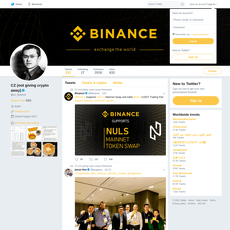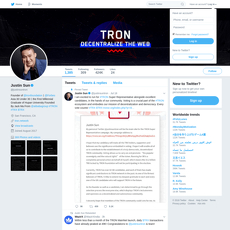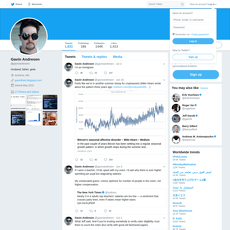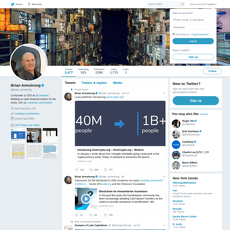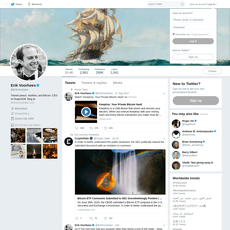loomdart - Holy War Arc Review
loomdart - Holy War Arc
x.com
Loomdart’s Holy War Arc: My No-BS X Review, Guide, and FAQ
Ever scroll X, see Loomdart roasting a narrative, and wonder, “Is this alpha, theater, or both—and should I act?” If you’ve felt that itch to jump in without the full picture, you’re exactly who I’m writing for.
Why this feels chaotic (and how it costs you)
Crypto X is a 24/7 shouting match. Big personalities spar, memecoins whip around, and inside jokes mutate hourly. The “Holy War Arc” is the latest, loudest storyline in the arena—it’s entertaining, but it also messes with your attention and risk management if you’re not careful.
Here’s what typically happens when the arc heats up:
- Context whiplash: You catch a quote-tweet without the original thread and miss the point. You react to reactions.
- FOMO mode: You feel late, so you enter fast and exit slow. That’s backwards. Research shows attention spikes drive impulse trades with weak follow-through; see Barber & Odean’s work on attention-driven buying.
- Entertainment ≠ entries: A killer meme racks up 10k likes. Your brain tags it “signal.” It’s usually not. Even on non-crypto topics, false or spicy content spreads faster than truth (MIT/Twitter study), which is brutal for traders who conflate virality with edge.
- Herd pressure: When big accounts pile on, herd effects kick in. Classic information cascades make people copy behavior without solid data (Bikhchandani, Hirshleifer, Welch).
Rule of thumb: if you can’t map a post to a testable market claim, file it under “vibes,” not “trades.”
With Loomdart’s arc, the volume is cranked up. He pokes at sacred cows—L1 vs L2 tribalism, memecoin rotations, VC incentives, influencer games—and your feed lights up. Funny? Yes. Useful? It can be. But only if you separate signal from showmanship.
What you’ll get here (and how it saves you time)
I’m cutting through the noise so you can:
- Understand the arc fast: What it is, why people care, and how it moves attention.
- Spot real signals: Simple checks for liquidity, flows, and behavior you can verify.
- Use practical guardrails: Keep your entries clean and your risk tight while still enjoying the show.
- Get a quick FAQ: Short answers you can share when friends ask, “So… what’s this Holy War thing?”
Who this is for
- Active traders who want context without sinking an afternoon into threads.
- NFT collectors and on-chain sleuths who track culture shifts and money flows.
- Newcomers who don’t want to wander into fights they don’t understand.
- Longtime followers who want a clean summary to point people to instead of re-explaining every meme.
Quick disclaimer
This is not financial advice. It’s an editorial guide built to help you stay sharp, safe, and informed while you enjoy the chaos. Always cross-check claims, use your own charts, and size responsibly. For ongoing updates, I’ll post follow-ups on cryptolinks.com.
So, who’s the guy stirring the pot—and why does his voice move attention the way it does? Let’s unpack that next, including the NFT angle everyone forgets until it matters.
Loomdart 101: why this voice matters
Loomdart is one of those rare X accounts that can shift the conversation in minutes. He trades, he jokes, he riffs on NFTs (he’s closely associated with the cult-favorite Wassies), and he knows exactly which thread to pull when a narrative looks bloated. If you’ve been around Crypto X for a while, you’ve seen his posts ripple into your feed—fast.
“Attention is the currency; liquidity just validates the price.”
Why that matters: attention and markets are joined at the hip. There’s real research showing it. Investor attention predicts flows in traditional markets, and social/media activity correlates with crypto volatility and momentum:
- Barber & Odean (2008): attention shocks steer retail behavior.
- Kristoufek (2013): search interest tracks Bitcoin price dynamics.
- Garcia et al. (2015): social signals and “bubble” phases move hand in hand.
Put simply: when Loomdart points the spotlight, the room gets louder—and sometimes, prices move with it. He’s part analyst, part entertainer, and fully aware of the incentive games that run under the surface.
“Holy War Arc,” explained in plain English
Think of it as a recurring storyline where he attacks sacred cows and noisy narratives. It’s not one post—it’s an ongoing set of jabs, polls, and quote-tweets that pressure-test the stuff everyone repeats without thinking. Common targets include:
- L1/L2 tribalism: “My chain good, your chain bad” gets torn down with questions about actual users, fees, and real flows.
- Memecoin culture: calls out when memes are pure musical chairs versus when they’re real distribution machines.
- VC incentives: asks who benefits from the next “meta,” who’s exit-liquidity, and who’s left holding the bag.
- Influencer theater: highlights the gap between posting and positioning—what people say vs. what their wallets do.
You’ll see him poke holes in favorite talking points. A flashy TPS claim? He’ll ask about usage that matters. A “can’t miss” rotation? He’ll ask who’s paying for it. It’s part comedy, part stress test—and the comment sections turn into live sentiment gauges.
Why people care
He’s early, loud, and—crucially—he reads the room well. Even when the tone is sarcastic, there’s usually a market claim hiding in the punchline. That mix keeps traders locked in because it helps them separate vibe from viability.
- He frames the debate: one pointed quote-tweet, and a comfy narrative starts to wobble.
- He exposes incentives: by asking “who gains?” he forces threads to talk mechanics, not slogans.
- He reroutes attention: a meme or poll can move eyeballs—and eyeballs move flows, especially at the edges.
- He brings NFT culture into markets: Wassie humor is a glue; it keeps people reading long enough to absorb the point.
If you’ve ever felt that anxious “am I missing it?” tug while your feed catches fire, that’s exactly the emotional lever this arc pulls. The trick is learning when it’s pure theater and when it’s a tell about where sentiment wants to go next.
Where to follow along
Start with the main feed: https://x.com/loomdart. Expect:
- Quote-tweets that reframe trendy takes and force better arguments.
- Polls that surface where the crowd stands (and how confident it is).
- Meme replies that signal tone shifts—often the earliest sign a narrative is getting frothy or tired.
Pro tip for quick scanning on web: use X’s search operators. Try from:loomdart min_faves:500 to catch the highest-impact posts, or from:loomdart filter:replies when you want to see how he’s steering specific threads.
So here’s the real question: when this storyline kicks off, how does it usually build, peak, and cool off—and where do the tells show up along the way? I’ll map the phases next so you can spot the turn before everyone else does.
The Holy War Arc: timeline and recurring themes
If your feed has felt like a coliseum lately, you’re not imagining it. This arc runs like a season of TV—new characters, narrative flips, and the occasional market tantrum—except your PnL is the cliffhanger.
“Don’t confuse the show for the order flow.”
Phase 1: The spark
This begins with quick, pointed shots at lazy narratives—think checklist-tokenomics, reheated “must-own” chains, and memecoins with zero staying power. The tone: surgical sarcasm. The effect: instant polarity.
What you’ll notice:
- Snappy call-outs on recycled pitches (“TVL go up” without users, “airdrops soon” without product).
- Polls and prompts that force skin-in-the-game answers—no middle ground, pick a side.
- Quote-tweets of VC platitudes or influencer cope, with a one-liner that sticks.
Why it takes off: controversial posts amplify reach. Research shows moral-emotional language spreads faster on social networks than neutral talk (PNAS, 2017). In crypto, that means the first clean hit on a sacred cow can dominate timelines for hours.
Phase 2: The escalation
Now bigger accounts pile in. Threads stretch. Memes get spicy. Each reply is a sub-battle, and markets occasionally overreact as attention sloshes between tickers and chains.
What you’ll notice:
- Threads-of-threads with screenshots, on-chain tidbits, or funding rate highlights.
- Copycat arguments as tribes spin up talking points to defend their bags.
- Short-lived price jolts when attention concentrates—more noise than trend, but enough to trigger FOMO.
Attention can nudge flows, even if only temporarily. Crypto is especially sensitive to social chatter: spikes in online attention correlate with trading activity and volatility (Royal Society, 2014; SSRN, 2021). The key is separating performative heat from data you can verify.
Phase 3: Settling into rhythm
The arc gets self-aware—callbacks, running jokes, and a clearer thesis: incentives beat ideals, attention is currency, and anything trending deserves extra skepticism.
What you’ll notice:
- Meta-jokes that refer back to earlier posts—if you missed the start, you’ll miss half the meaning.
- “Show me the flows” energy—nudges to check liquidity, unlocks, and where the real users are.
- Less dunking, more direction—not “buy this,” but “ask why this is moving and who benefits.”
This is where the entertainment layer hides a consistent framework. You’ll see prompts to check stablecoin velocities, bridge inflows, perps open interest, or real active users versus new wallets. The joke is the hook; the data is the point.
Recurring themes to watch
Incentives > ideals
Follow who gets paid if the story wins: vesting schedules, market-maker agreements, fee switches, and token unlock calendars. Narratives often map cleanly to someone’s P&L. If the “why now?” is unlocks or emissions, you’ve got your answer.
Memes as distribution
Memes ferry ideas across tribes faster than press releases. That’s not fluff; it’s strategy. Narrative economics shows stories can move markets (AER, 2017). Watch which meme formats cross communities—those are the ones that carry flow.
Tribalism vs actual utility
Ignore mascot wars. Check real usage: daily active users that stick, fees paid by non-sybil wallets, retention after incentives stop, and builder velocity. Vanity metrics spike; utility grinds.
“Show me the flows,” not slogans
When the timeline yells “innovation,” pull up:
- Stablecoin net issuance and migrations
- DEX volumes and aggregator market share
- Perps open interest and funding flips
- Bridge inflows/outflows and L2 gas trends
Free places to start: DeFiLlama, CoinGecko, and your preferred on-chain scanner.
When this arc is at full speed, it feels like a carnival. Fun, loud, addictive. But what do you actually act on, and what stays in the “vibes” folder? Want a dead-simple way to separate signal from showmanship in real time—without nuking your risk?
How to read Loomdart without losing your edge
When your feed starts yelling, your heart rate spikes and your cursor drifts toward the buy button. Breathe. Enjoy the show, but keep your PnL out of the splash zone.
“Entertainment pays in likes; execution pays in PnL.”
Sort signal from showmanship
I treat every hot take like a hypothesis. If I can’t test it, it’s content—not a trade.
- Is there a claim you can verify? If he jabs at an L2’s “empty TVL,” pull L2Beat TVL and compare week-over-week flows. If he mocks “memes running the market,” check chain volumes on Dexscreener and stablecoin flows on Dune.
- Look for flows, not slogans. Funding, open interest, and liquidity trumps rhetoric. I cross-check funding and OI on Coinalyze or Coinglass before touching a narrative trade.
- Behavior > quotes. If he’s clowning a chain but influencers and market makers are rotating there, that’s information. Track pair creations and unique traders per chain via Dune dashboards or Flip.
- Sentiment ≠ signal. Viral threads often coincide with short-term overreactions. Classic market research shows attention drives flows: see Barber & Odean’s “All That Glitters” (SSRN) and Da–Engelberg–Gao on Google search volume and returns. Use that as a timing cue, not a thesis.
Real example workflow: he jokes that an L2 is “up only on memes.” I’ll:
- Check 7D TVL and bridge inflows on L2Beat.
- Compare chain DEX volume and active pairs on Dexscreener.
- Verify perp funding/OI shifts for the chain’s top tokens on Coinalyze.
- If all three line up with the joke, I still wait for invalidation levels and liquidity to make sense before acting.
Entertainment vs execution
Good memes are not entries. I pre-commit to rules so jokes don’t move my position size.
- Position size: cap narrative punts to 0.5–1.0% risk per idea.
- Invalidation: define a price or data break. Example: funding flips from negative to positive and price breaks prior swing high on rising OI—my short thesis is done.
- Time limit: if the move doesn’t happen in 24–72 hours, I recycle the risk. Narratives decay fast.
- Three-confirms rule: I want 3 of these 5: funding alignment, OI direction, spot/derivatives volume divergence, real liquidity on the book, and builder/market-maker engagement (not just influencers).
Sample trade plan from a spicy thread: Loomdart mocks an “unstoppable” chain. I consider fading beta, but only if:
- Funding goes richly positive across majors tied to that chain.
- OI rises while price stalls at HTF resistance on TradingView.
- DEX volume thins and unique buyers trend down for 48h on Dune.
- Risk: 0.75% of account, stop above invalidation wick, 2:1 R multiple or time stop at 48h.
Safety checklist
The replies are a minefield. Treat every link like it wants your seed phrase.
- Impostors: confirm the exact handle and age of the account before interacting. Don’t trust display names or blue checks.
- No “claim” links. Airdrops, “gasless mints,” and “support” DMs are traps. If you must mint, use a burner wallet and verify contracts on Etherscan/BSCScan/Blockscout.
- Permission hygiene: review and revoke approvals via revoke.cash or Etherscan’s Token Approvals.
- Lock accounts down: passkeys or app-based 2FA (no SMS), unique email, and beware SIM swaps. Consider a hardware wallet for anything non-trivial.
- Report and move on: reply-guy scams thrive on engagement. Don’t quote-tweet fraud; just report.
My reviewer notes
He’s sharp on crowd mood and timing. The value for me isn’t the trade ideas—it’s the early read on what the timeline will obsess over next.
- Tells I watch: when the sarcasm turns into data, something’s close to breaking. When the dunking gets one-sided, I expect a snapback.
- How I use it: I build “if–then” scenarios. If his thread pushes a narrative into mainstream engagement and funding spikes, I look for a mean reversion setup. If builders respond with dashboards and the numbers confirm, I look for continuation instead.
- Why it works: attention is a flow. Studies on attention-driven buying and social sentiment show short-term impacts on returns—use that window, don’t marry it.
Want the exact list/alert setup, mute words, and tools I use to keep this clean and actionable—without muting the fun? That’s next.
Practical guide: how to follow, filter, and engage
Keep your feed useful and your notifications sane—without missing the moments that actually move markets.
“Attention is a position. Protect it like capital.”
Set up X lists and alerts
Think “radar, not firehose.” Build a tight list and give it a dedicated window on your screen.
- Create a “Market Radar” list: add @loomdart plus a few sober, data-forward accounts so you’re seeing reactions from builders and flows, not just memes:
- @CumberlandSays (liquidity and OTC color)
- @wintermute_t (market making and market structure)
- @kaiko_data (spot/derivatives data)
- @glassnode, @cryptoquant_com, @santimentfeed (on-chain context)
- @lookonchain, @spotonchain (on-chain alerts; verify posts before acting)
- Use X Pro (TweetDeck) columns: one column for your “Market Radar” list, one for from:loomdart, and a third for a saved search like “loomdart filter:quote” to catch who’s quoting him with data.
- Turn on alerts with timers: enable notifications for loomdart + 2–3 data accounts during high-vol windows (Asia open 00:00–03:00 UTC, EU open 07:00–10:00 UTC, US open 13:00–16:00 UTC). Use your phone’s Focus mode to allow only those alerts; let everything else wait.
Why timebox? Studies on focus (Gloria Mark, UCI) show task switching can take ~20+ minutes to recover. You’ll trade better if you batch attention instead of letting pings rule your day.
Use tools to cut noise
- Mute bait and promo terms:
- giveaway, whitelist, wl, retweet to win, tag 3, shill, airdrop (phrase-bait), free mint, claim now, double your crypto
Settings → Privacy and safety → Mute and block → Muted words. Add obvious variants and emojis people use to sneak past filters.
- Enable “Quality filter” + “Muted notifications from people you don’t follow”: trims reply-guy spam and bot swarms so you see signal first.
- Save threads; don’t trade mid-scroll: Bookmark high-signal posts and send them to a reader app (Readwise/Instapaper/Notes). Make a simple rule: no entries until you’ve checked liquidity, spreads, and a 1H/4H chart. Attention-driven trades underperform—investor-attention research (e.g., Barber & Odean; Da, Engelberg & Gao) shows spikes in attention often mean crowded trades and choppier outcomes.
- Watch the reactions, not just the retweets: if a hot take gets quote-tweeted by builders/market-makers with charts or contract addresses, that’s higher-grade information than raw likes. Example: if he questions an L2’s usage and within an hour you see engineers posting dashboards, gas metrics, or contract call counts, that’s actionable context—still not an entry, but worth charting.
- Use pragmatic searches when the feed explodes: try queries like “from:loomdart keyword” for context; add filter:quote to see who’s adding data; append min_faves:50 if you want a rough crowd threshold. Then verify claims off-platform (docs, dashboards, block explorers).
Engage without getting roasted
The room respects receipts. Keep your replies short and loaded with something verifiable.
- Use the “Point → Proof → Question” format:
- Point: “Rotation looks L1 → memes today.”
- Proof: link a 24h volume or OI chart (Kaiko, CoinGlass), or a Dune dashboard.
- Question: “Anyone seeing stablecoin inflows confirm this?”
- Bring one chart or one on-chain receipt, max: clutter gets ignored; a clean visual earns replies.
- Skip personal shots and dunking: you’ll get more signal back when you ask clean questions. If you’re new to a thread, lurk for a few posts to catch the tone and inside jokes.
- Link hygiene: never click “claim” links in replies or QTs. If someone shares a contract, paste it into a trusted explorer yourself and double-check the creator, holders, and recent transfers before you even consider touching it.
NFT angle to remember
Wassies are context, culture, and a sense of humor—not a blinking “buy” light. A Wassi meme flooding your feed means the joke is traveling; price action is a separate question. Keep two tabs mentally:
- Culture tab: memes, PFPs, running jokes, and sentiment rhythm.
- Market tab: liquidity, volumes, spreads, catalysts, and flows.
When culture heats up, it can amplify distribution for a narrative. That helps you time attention, not your entries. Track the art; trade the numbers.
Want straight-to-the-point answers on the questions everyone keeps asking—like how to track posts fast, whether this is “just pumping,” and which links actually help without wasting your time?
FAQ: quick answers to the most common questions
Who is Loomdart?
He’s a veteran crypto trader and one of the loudest, funniest voices on X. You’ll see him mix sharp market reads with memes, and he’s connected to NFTs—most people know him for “Wassies by Wassies.” Think of him as a sentiment barometer with a knack for timing attention.
Real example: when gas or liquidity is getting weird, he won’t post a dry chart—he’ll meme it, quote-tweet a few takes, and nudge you to look at flows over slogans. That combo is why traders watch his feed even if they disagree with his punchlines.
What is the “Holy War Arc”?
It’s an ongoing storyline where he challenges hyped narratives and tribal lines—L1 vs L2, memecoins vs “serious” tokens, VC incentives, and influencer games. It’s part commentary, part theater, and it pushes people to question what’s actually driving price: attention and incentives.
Core idea: “Incentives > ideals.” If it’s trending, ask who benefits, where the liquidity’s coming from, and who’s paying the spread.
Is this just pumping?
Short answer: treat anything viral as sentiment, not guaranteed alpha. He’s influential, so attention can nudge liquidity, but that doesn’t make a post a trade setup.
What research says about attention:
- Retail buys attention: Barber & Odean (2000) show individual investors chase attention and overtrade—great reminder to size small when a post is everywhere.
- Search interest tracks flows: Da, Engelberg & Gao (2011) found that spikes in search volume (a proxy for attention) move retail behavior.
- Crypto is attention-sensitive: Studies like Kristoufek (2013) and later Twitter/sentiment papers report that social chatter and search trends often correlate with Bitcoin and token moves, especially in short windows.
Real-world checklists when a Loomdart post is ripping through X:
- Liquidity: is there depth on order books or DEX pools? Thin liquidity plus viral attention = slippage trap. Tools: TradingView depth snapshots, DEX Screener/GeckoTerminal.
- Top holders and unlocks: concentrated whales or pending unlocks can fade euphoric spikes. Tools: Etherscan holders, project tokenomics pages, Nansen labels.
- Funding and OI: overheated perp funding or surging open interest often marks crowded trades. Tools: Coinglass, Laevitas.
- Time window: attention bursts are usually short. If you trade them, define invalidation and a time limit before you click buy.
How do I track his posts fast?
Quick setup:
- Follow: https://x.com/loomdart
- Lists: add him to a “Market Radar” list with a few credible flows accounts. Toggle list notifications during volatile hours.
- Smart alerts: hit the bell on X; during busy sessions, also watch your watchlist on TradingView/Coinalyze so you see price and sentiment together.
- Power search: use X search filters to catch high-impact posts fast:
from:loomdart min_retweets:100 OR min_faves:500
Pro tip: pair alerts with a simple “act or ignore” rule. If you can’t verify flows or a trade level in 2–3 minutes, screenshot it for later and move on.
One last thing before we move on: ever wonder whether the upside of following a loud arc like this outweighs the noise—and how to structure your own rules so you get the benefits without the tilt? That’s exactly what I’m breaking down next.
Pros, cons, and my verdict
Loomdart’s Holy War Arc is noisy by design, but if you treat it as a live sentiment gauge—not a trade copier—it becomes unfairly useful. I keep it in my feed for the same reason I track funding, open interest, and Google Trends: attention moves price, and culture decides where attention goes next.
The upside
- Fast reads on narrative heat. When his posts cluster around a topic—L2 fees, memecoin meta, VC unlocks—I flag that sector on my watchlist. In my notes, those clusters often precede a 24–48h surge in mentions and liquidity elsewhere on X.
- Sharper BS filter. He’s relentless about incentives, which keeps me asking the right question: “Where are the flows?” That one question alone has saved me from chasing plenty of shiny but illiquid stories.
- Better timing for entries and exits. I don’t trade his jokes; I trade the reactions. If builders, market makers, and data accounts pick up the thread, I know the conversation has legs. If it’s just dunking, I let it pass.
Why I trust the sentiment edge:
- There’s evidence social sentiment can lead price and volatility in crypto. Studies like Kraaijeveld & De Smedt (2020) show Twitter sentiment holds predictive power for Bitcoin returns and volume.
- We’ve all watched single accounts shift crypto flows. See Ante (2022) on how one influencer’s tweets moved price, volume, and volatility across crypto.
- Even beyond crypto, social mood impacts markets—classic work like Bollen et al. (2011) documented this years ago.
My simple rule: strong engagement plus credible replies equals a watchlist change. Jokes alone don’t.
The trade-offs
- High noise floor. The show is part of the value—don’t confuse it for a trigger. I stick to “testable claims only” before I risk a dollar.
- Overtrading risk. Memes make you feel late or early when you’re just emotional. I cap size and add a timer: if my thesis doesn’t start working in a set window, I’m out.
- Satire is easy to misread. Sarcasm can look like a signal. When in doubt, I wait for on-chain confirmation (flows, volumes, holders) or market structure signals (funding flips, skew shifts) before touching anything.
How I solve it:
- Pre-commit to position sizing and invalidation before interacting with any viral post.
- Don’t trade mid-scroll. I screenshot, tag the topic, and return when charts and tape agree.
- Cross-check with neutral data: DEX volumes, liquidity depth, perp funding, options skew. If those don’t corroborate the noise, I pass.
What I’ll be watching next
- Liquidity rotations across L2s and memecoins. If attention shifts from fee jokes to bridge stats and TVL, that’s a real tell.
- Builder responses with data. When devs and market makers bring dashboards instead of dunks, narratives graduate from memes to trades.
- Attention-to-flow gap. Big engagement with flat on-chain flows is my favorite fade. Big flows with modest engagement is my favorite sneak-in.
- Funding and skew during flare-ups. If a thread ignites and funding spikes one way, I hunt for the asymmetry on the other side.
Final word
My take: follow for sentiment and culture, not blind entries. Use his feed to see where the crowd will look next, then let your charts, order flow, and on-chain data decide what you actually do. That balance—fun and focus—is the edge.
I’ll keep tracking this arc and updating my notes on Cryptolinks.com so you can stay ahead without getting swallowed by the noise.
CryptoLinks.com does not endorse, promote, or associate with Twitter accounts that offer or imply unrealistic returns through potentially unethical practices. Our mission remains to guide the community toward safe, informed, and ethical participation in the cryptocurrency space. We urge our readers and the wider crypto community to remain vigilant, to conduct thorough research, and to always consider the broader implications of their investment choices.


